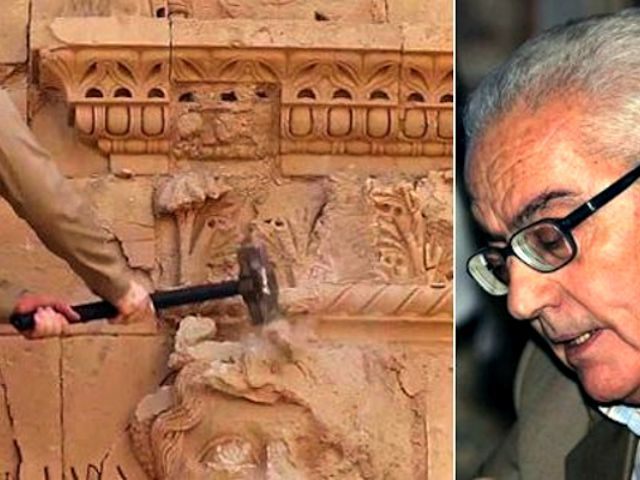The Islamic State (ISIS/ISIL) beheaded Khaled Asaad, a beloved archaeologist, in Palmyra. The 82-year-old lived and worked in the UNESCO Heritage Site for over 50 years.
Asaad’s family revealed the death to Syrian state antiquities chief Maamoun Abdulkarim. The terrorists executed him on Tuesday and “hung his body on a column in a main square” in the city.
“Just imagine that such a scholar who gave such memorable services to the place and to history would be beheaded … and his corpse still hanging from one of the ancient columns in the centre of a square in Palmyra,” exclaimed Abdulkarim. “The continued presence of these criminals in this city is a curse and bad omen on [Palmyra] and every column and every archaeological piece in it.”
The terrorists held Asaad for over a month and interrogated him “about the location of treasures” saved before ISIS moved in. They promptly executed him when he refused to provide any information.
The archaeology community mourned the news, including former antiquities official Amr al-Azm:
“He was a fixture, you can’t write about Palmyra’s history or anything to do with Palmyrian work without mentioning Khaled Asaad,” he said. “It’s like you can’t talk about Egyptology without talking about Howard Carter.”
He added: “He had a huge repository of knowledge on the site, and that’s going to be missed. He knew every nook and cranny. That kind of knowledge is irreplaceable, you can’t just buy a book and read it and then have that.
“There’s a certain personal dimension to that knowledge that comes from only having lived that and been so closely involved in it and that’s lost to us forever. We don’t have that anymore.”
Abdulkarim and others preserved many ancient artifacts out in the open and from museums when ISIS set their eyes on the historic city. The terrorists are known for dismantling and destroying history in the towns they seize.
“Before taking control of the city [by ISIS], a large number of the items were moved into Damascus, but thousands of the ancient items and sites still remain inside the city,” said Abdulkarim. “Many are heavy and big, so difficult to relocate.”
ISIS took the town in late May and quickly promised not to destroy artifacts. But in July, pictures showed terrorists destroying the ancient statues. Militants insist the group demolishes these items because they promote idolatry. Yet, before they blow up the buildings, witnesses have repeatedly reported seeing the men leaving with artifacts and antiques a few days before the destruction. The group started with only a few dollars, but selling antiques on the black market propelled ISIS into billionaires.

COMMENTS
Please let us know if you're having issues with commenting.